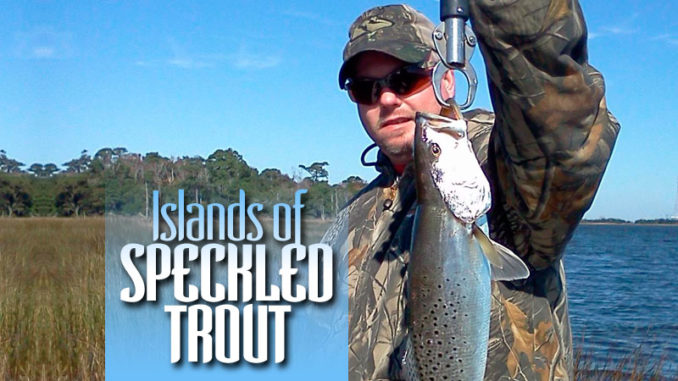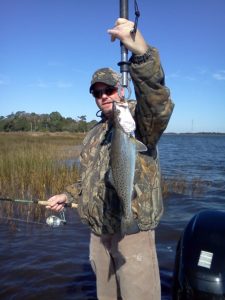
Cape Fear’s spoil islands will hold trout
The Cape Fear River and its bays and tributaries typically hold speckled trout year-round. Unless there is an early cold snap that chills the water more than usual, the bite stays pretty aggressive into December, and the early forecast is for the weather to remain warm through Christmas. A lot of smaller and mid-size trout are caught this month, and it’s also a good time to find specks that tug the scales beyond 5 pounds.
Specks will be in the creeks and bays, but many of the larger ones will be in the river looking for larger meals. Many fishermen look for schools of small menhaden to locate trout. In cold water, menhaden probably won’t be flipping, but a sharp eye will spot wakes from schools moving just below the surface.
In the 24 miles from Southport, N.C., and Wilmington, N.C., the river is dotted with about 20 islands, created by numerous dredging projects to maintain the river’s shipping channel. They range from mostly sand to a mixture of mud and sand; some, are at least partially bordered by marsh grass, and rock and even ballast stone from early sailing ships line some the spoil islands, creating a habitat that attracts bait and brings in big fish to feed.

The spoil islands, large and small, interrupt the river’s tidal flow and create potentially good fishing spots. Where they disrupt the river’s currents, a strong current is created on the channel side of the island and a weaker one on the back side. There may also be pockets of protected water, and some of the islands have grown close enough together to create small creek and marsh systems.
Trout, plus some redfish and occasionally stripers or flounder, hold around the spoil islands, looking for cover or a break in the current to hold while feeding. One consistent feeding spot is the downcurrent end of the islands. Trout hold in the slower-moving water where it blends back into the faster current and watch for baitfish are trapped in the stronger current. When they see something they like, they dart out and grab it, and then return to the comfort of the slower moving water.
“When you fish these islands, you should be prepared to fish topwater, shallow or deep,” said Wilmington’s Stuart Caulder of Gold Leader Fishing (910-264-2674). “You’ll see a variety of structure that includes everything from steep, rocky drops to shallow flats, with sand, mud or rock bottoms. I come rigged with a topwater, a suspending bait, a slow sinking bait and a bait that will sink quickly. I like MirrOlure Top Pups for topwater, MirrOlure MirrOdines for suspending lures and DOA shrimp, paddletails and jerkbaits for fishing the bottom.”





Be the first to comment